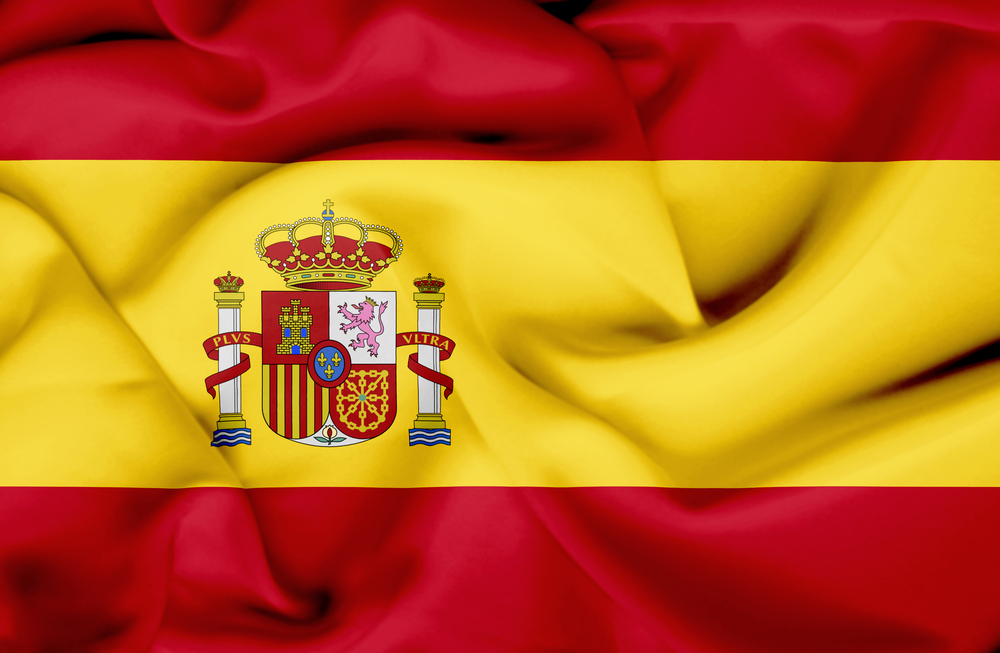



Weekly beef and dairy digest: In-depth analysis of US and Spanish dairy sector
US beef exports slide in latest week
As of 29 April, US beef net sales of 23,600 metric tonnes (MT) reported for 2021 were down 4% from the previous week, but up 22% from the prior four-week average. Increases were primarily for South Korea (11,700 MT, including decreases of 600 MT), Japan (4,900 MT, including decreases of 600 MT), Mexico (2,000 MT), China (1,900 MT, including decreases of 200 MT), and Hong Kong (600 MT, including decreases of 100 MT).
Exports of 18,700 MT were down 4% from the previous week and 2% from the prior four-week average. The destinations were primarily to South Korea (5,900 MT), Japan (4,800 MT), China (3,100 MT), Mexico (1,300 MT), and Taiwan (1,000 MT).
US dairy market at a glance
Cheese highlights
Cheese availability has varied by region and within regions, but barrel producers have begun reporting strength in demand, as well as a limit regarding supply. The CME markets exhibited some of the strength in barrel markets this week, as barrel prices overtook block prices on 27 April after a $.06+ bounce. Market tones, in general, are a little shaky as some questions go unanswered regarding the effect of the different direction the government is taking in regards to the food box programs.

Milk remains generally available, although there were some overages reported this week from Midwestern cheese producers. The reported spot milk price range was $5 under Class to $.50 over Class. With the available milk supplies, cheese production is active, although plant managers report some upcoming seasonal maintenance over the course of the next few weeks.
Butter highlights
Cream supplies vary regionally. Butter makers are generally receiving adequate volumes of cream to support seasonal production levels. Inventories remain stable. Retail demand varies but is trending steady to lower. Nationally, food service orders have markedly improved since the ides of March.
Midwestern food service butter demand now seems to be reaching a plateau, but Western and Eastern demand continues to climb. Early in the week, market tones wavered. Bulk prices range from 1.0 to 8.0 cents above the market across the country this week.
Fluid milk
While milk production is nearing, at, or just past peak levels in the southern parts of the country, milk output is said to be steady to lower across much of the northern parts of the country. That said, some upper Midwestern farmer contacts suggest peak flush levels may still be a few weeks away. Regardless, manufacturers contend there is plentiful milk available for processing. Industry contacts report Class I demand is steady to lower, apart from healthy demand in Florida, Arizona and the Pacific Northwest. Condensed skim markets are mostly steady, but tanker availability is a challenge to moving loads.
Cream supplies remain adequate for most processing needs. Midwest contacts report cream supplies loosened up compared to previous weeks. Multiples for cream in all Classes are: 1.26-1.37 in the East, 1.24-1.30 in the Midwest, and 1.05-1.28 in the West.

Dry products
Low/medium heat non-fat dry milk prices continued to move higher this week. Even with ample milk supplies and active production, domestic and export customers are actively seeking out loads. High heat prices are steady to higher. Manufacturers are focusing on the production of low/medium heat NDM in order to keep up with the abundance of milk. Buttermilk powder prices are steady to higher. Discounted loads of dry buttermilk resulting from shipping delays were not reported this week. Dry whole milk powder prices moved slightly higher at the bottom of the range.
Prices for dry whey are mostly higher and supplies remain tight. Animal feed whey prices are steady to higher, on light trading. While the bottom of the whey protein concentrate 34% price range moved a tick lower, the overall market tone for WPC 34% is steady. Strong prices for the higher whey protein concentrations are keeping whey solids moving toward those markets, instead of toward dry whey or WPC 34% production. Lactose prices are steady to lower. A few higher priced sales cleared the market, but the market tone is stable. Rennet and acid casein prices are firming, with supplies mostly committed until Q3.
Organic dairy market news
Federal Milk Market Order 1, in New England, reports utilization of types of organic milk by pool plants. During March 2021, organic whole milk utilization totaled 14.8 million pounds, up from 14.2 million pounds the previous year. The utilization of organic reduced fat milk in March this year, 17.1 million pounds, increased from 13.7 million pounds a year earlier. The price spread between weighted average advertised prices for organic half gallon milk, $3.92, compared to $1.59 for conventional half gallons, led to an organic premium of $2.33. The organic premium increased $0.78 from the previous reporting period.
The Agricultural Marketing Service (AMS) reports estimated US sales of total organic milk products for February 2021 were 227 million pounds, up 6.8% from February 2020, and up 7.5% year-to-date. Organic whole milk sales for February 2021, 98 million pounds, were up 4.1% compared to a year earlier and up 5.1% compared with year-to-date 2020. Reduced fat milk (2%) sales were 78 million pounds, up 9.8% from the previous year and up 13.5% year-to-date.
National retail report
Throughout the retail reports in the month of April, the most advertised conventional dairy item has been ice cream in 48 – 64-ounce containers. This trend continued this week, being featured in 14% more ads than last week.

Conventional cheese ads fell by 10% this week. The weighted average advertised price of conventional 8-ounce shred cheese dropped to $2.38, a decrease of $0.11 from the previous week. Total ads for conventional yogurt increased this week by 3%.
Total organic yogurt ads fell slightly, by 5%, in this week’s survey. Ads for both conventional and organic milk decreased this week. Conventional milk ads fell by 39%, while organic ads saw a 4% drop. The weighted average advertised price for half gallon conventional milk dropped by $1.00 to $1.59.
What's happening in Spain's dairy industry?
USDA has reported Spanish domestic cow milk production rose 2.7% to 7.4 million tonnes in 2020 compared to 2019, due to increased efficiency in cow milk production and a wet spring during 2020. Conversely, in 2020, the Spanish dairy cow herd declined 4% to 810,000 animals. The number of dairy farmers continued its downward trend, lowering 5% to 12,479 dairy farmers compared to 2019. Improvements in agronomical factors such as animal genetics, nutrition, installations, animal health, and animal welfare significantly enhanced efficiency and the production of cow milk. This efficiency growth also continued to boost Spanish imports of US bovine genetics valued at $4.5 million in 2020, increasing 36% over the last five years.

In addition, Spain is one of the EU leading producer of sheep and goat milk, mainly destined to produce high-valued cheeses. However, in 2020, due to the COVID-19 pandemic, the Spanish dairy sector faced disruptions marketing gourmet cheeses like sheep, goat, and mixed cheeses given the temporary closure of the hotels, restaurants, events, celebrations, and tourism. For this reason, in 2020, Spanish production of sheep and goat milk declined slightly. However, due to the strong demand for Spanish sheep and goat milk domestically and in external markets, including China, sheep and goat milk prices are trending upwards. Spanish industry sources remark that in 2020, during the COVID-19 pandemic, household consumption of fluid milk, yogurt, butter for homemade bakery, milk cream, and low-cost cheese grew strongly.
According to the Spanish dairy industry, domestic dairy consumption may continue to rise in the coming years. However, this increase in household consumption did not offset the loss of the hospitality and tourism sectors marketing high-valued cheeses and other dairy products. Spain effectively reoriented its dairy export destinations to non-EU markets.
In 2020, Spain sent 65% of its total dairy exports to other EU markets, mainly to Portugal, France, and Italy. Major non-EU markets of Spanish dairy exports are the UK, Saudi Arabia, the United States, and China. In 2020, despite the COVID-19 crisis and related global measures, total Spanish dairy exports -including milk- increased 0.4% and valued at $1.8 billion. Higher export volumes of milk and cream, yogurt and fermented milk, infant formula, and whey offset lower export volumes of Spanish cheese.
Spanish dairy exports to the United States are mainly high-valued cheese as this market is Spain’s major export destination for cheese outside the EU. In 2020, Spain´s cheese exports to the U.S. decreased 17 percent in volume, and 2.5 percent in value to $94 million due to the COVID-19 crisis and additional U.S. tariffs in response to the WTO case against EU aircraft subsidies. Spanish dairy sources report that Spanish and US traders absorbed the cost of the additional tariffs. Thus, they welcome the announcement in March 2021 suspending these additional tariffs for four months and expect a rebound of Spanish cheese exports in 2021. According to Spanish sources, in 2021, expecting the global recovery of the hospitality sector, Spanish dairy exports may continue trending upward.
Read Jim Wyckoff's analysis of the global swine industry on The Pig Site.
TheCattleSite News Desk
IMPORTANT NOTE: I am not a futures broker and do not manage any trading accounts other than my own personal account. It is my goal to point out to you potential trading opportunities. However, it is up to you to: (1) decide when and if you want to initiate any traders and (2) determine the size of any trades you may initiate. Any trades I discuss are hypothetical in nature.
Here is what the Commodity Futures Trading Commission (CFTC) has said about futures trading (and I agree 100%): 1. Trading commodity futures and options is not for everyone. IT IS A VOLATILE, COMPLEX AND RISKY BUSINESS. Before you invest any money in futures or options contracts, you should consider your financial experience, goals and financial resources, and know how much you can afford to lose above and beyond your initial payment to a broker. You should understand commodity futures and options contracts and your obligations in entering into those contracts. You should understand your exposure to risk and other aspects of trading by thoroughly reviewing the risk disclosure documents your broker is required to give you.



